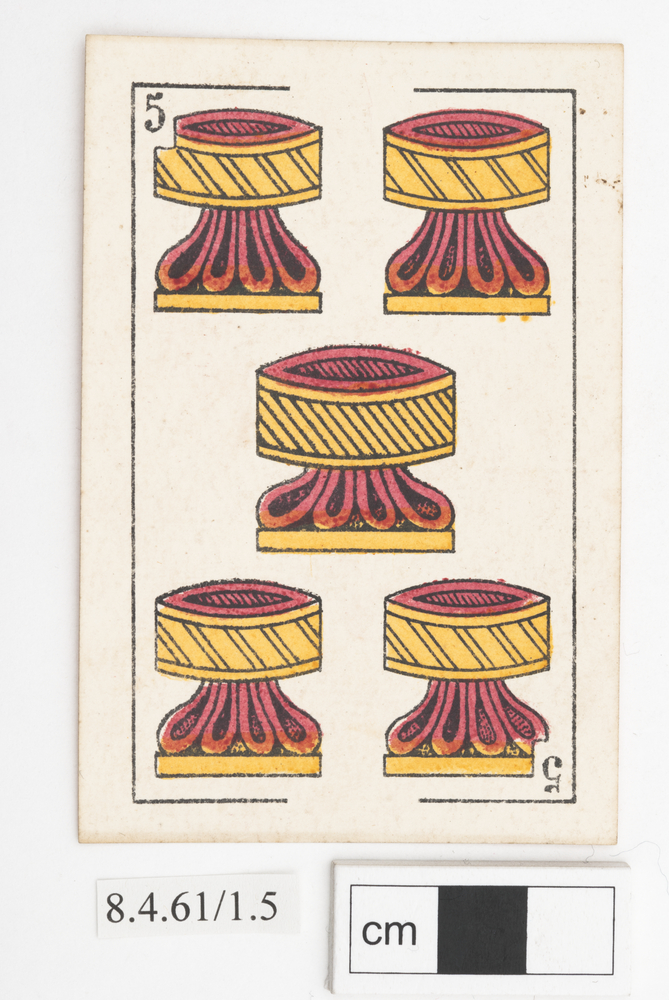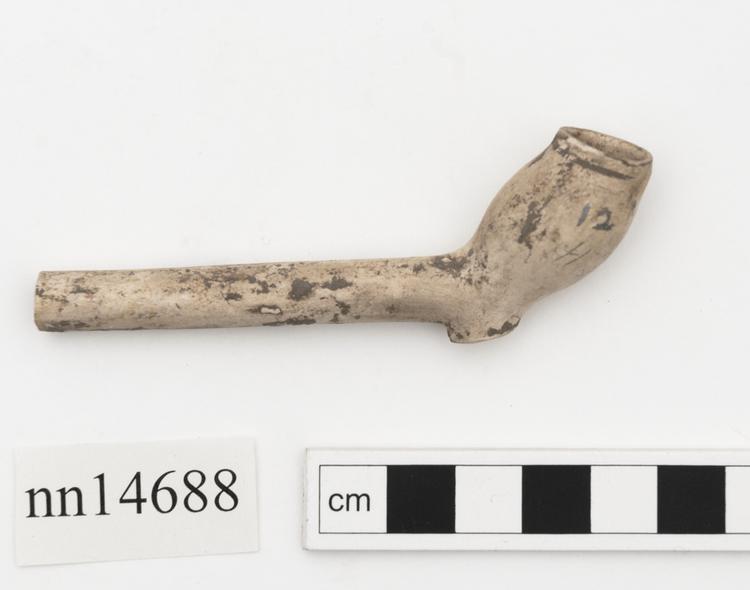
Barong Landung Puppet Masks
{{ :wiki:amp:19c0b6a7-9cf1-4dfd-b797-22df1d3212b4_1_201_a.jpeg?500x450}}
{{ :wiki:amp:jero_luh_side_profile.jpg?380x450}}
2010.80 JERO LUH (left)
2010.78 JERO GEDE (right)
Barong Landung, Ritual and Ceremony
Multiple myths and stories are associated with the two giant Balinese puppets which are called Barong Landung. Barong is a name which refers to a group of Balinese dances and ceremonies, Landung in Balinese means tall. Scaling ten feet in height, the two effigies embody the ancestral spirits of Jero Gede a male Balinese Hindu King and Jero Luh a female Chinese Buddhist Princess. The puppet masks become animated when they are incorporated into the full Barong Landung costume, forming the faces of the puppets. In Balinese culture the 'head' is revered as being the most sacred part of the human body containing the soul and closest to the realm of ancestors high above.
The puppets are created by weaving a bamboo frame which forms the structure of the giant's skirt, from within which a male puppeteer operates the armature, hidden underneath by a cloak of material. The torso of the puppet is constructed from wood and is fixed on top of the bamboo skirt frame, it is decorated with layers of ornate textiles and accessories made from cow hide. The puppeteer's head sits in line with the giants navel area, through which he can see to navigate the puppets direction. The magical manifestation of the ancestors in their puppet bodies is performed on special days of the Balinese calendar, including the Galungan festival. The giant puppets are accompanied by the village gamelan, an ensamble of drums, flutes and gongs. According to the Horniman website the musuem has 'the only Balinese Gamelan angklung in London https:www.horniman.ac.uk/workshop/gamelan/ As the Barong Landung parades through the village they spontaneously respond to the gamelan music and the crowds; swaying, dancing, singing, chatting even hurling insults towards one another. The village is entertained by the puppets comical performance as a bickering couple, however predominantly the ceremony has a sacred and spritial significance undertaken to perfom blessings and protect the inhabitants of the village from evil. As they bow, bend and whirl through the streets, villagers present the giants with offerings and money, collected on banana leaves.=The following is an interview with Ngakan Putu Agus Wijaya (Dewa Npaaw) in 2021, whose family lives in Pejeng village, the name of the temple is Pura Pusering Jagat. The script provides details regarding the preparation and process of the Barong Landung ritual and ceremony. Photographs accompany the interview produced by Dew Npaaw.Q: How long do the puppet costumes take to prepare?
= Multiple Myths and The Stories Origins
'the costume has to go through its own rituals and prayers first by offering a Segehan Agung. After that it is allowed to be used, usually it does not take long as you just put it on.' (Dewa Npaaw, 2021)Q: From images we have seen, women do not walk next to the Barong Landung, why is this?'... women are not required to do it because they are big and heavy. That is why the men are around the Barong. Even with the men, usually the taller ones would take the male role (the darker skin) and the shorter ones would take the female role (the lighter skin). Really depends on your capability. For example, I am taller than my father and brother, so I would always be chosen to take the male role while they take turns into the female role. The women have their own job desks such as bringing and sprinkling the holy water (Balinese - trite),bringing the flags (Balinese - sober) and the umbrellas (Balinese - pajeng)that accompany the ritual along.' (Dewa Npaaw, 2021)Q: Why is the Barong Landung improtant to you?'Barong Landung is the protector of the village, spiritually and by niskala (meaning: unseen). It is my grandfathers inheritance - it is not a material inheritance but it is an important obligation that is inherited. Thus, it is important and I continue it' (Dewa Npaaw, 2021)Photographs and footage taken at the Galungan Festival Bali, April 2021{{ :wiki:amp:1db86ebb-72df-4dca-82e4-5885e726a395.jpeg?400|}} {{:wiki:amp:file.mp4|}}
Ngakan Putu Agus Wijaya (Dewa Npaaw)(2021),Photographs taken at Barong Landung in Pejeng Village, Galungan Festial, Bali.= Origins of Barong Landung vary, one of the most common versions attributed to their creation is a tale of; love, betrayl and revenge set in the Twelth Century. The story tells of Sri Jaya Pangus a Hindu Balinese King and Kang Tjin We his Chinese Empress, who after years of marriage were not blessed with child. Consumed by not having an heir to their dynasty, together they agree for the King to visit Mount Batur to meditate. On his journey to Mount Batur he meets a beautiful Princess called Dewi Danu also known as the Balinese Water Goddess. The newly acquainted pair fall in love, marry and produce a son. Many years pass and the Empress decides to search for her King, when she finds him she discovers that he has betrayed her. Dewi Danu is also enraged because the king has lied having told her he was unmarried. Angered by the King's deception Dewi Danu turns King Jaya Pangus and his Empress into stone, thus creating the Barong Landung. Other endings and multiple stories exist, such as Dewi Danu and Kang Tjin We, who fight which results in a curse killing both the King and Empress, The Kingdom falls into sorrow when they hear about the loss of their Royal leaders and to pay homage and remember them, they recreate the couple in the form of statues. One of the most consistent themes of the Barong Landung versions, is that of a love triangle always ending in tradegy but equally emphasising the beauty of the enduring relationship between Jero Gede a Balinse Hindu and Jero Luh a Chinese Empress / or Princess depending on which account is selected, immortalised in material forms (sculptures or dolls). {{ :wiki:amp:barong_landung_processing_through_rice_fields.jpg|}} Hobart, M (c.1971) Barong Landung Processing Through Rice Fields Pisangkaja
=Diverse Narratives= Barong Landung is performed and associated with Southern areas of Bali, predominantly villages. On the surface the costumes, dancing, verbal exchanges and songs appear to be similar however they differ from village to village. Barong Landung is a localised traditional performance, there is no fixed script, dance, or choreography. Instead performances are improvised and informed by current issues or events concerning the villagers, this fluid approach allows for interpretation and adaptation. Dr Volker Gottowik recounts witnessing an exchange between Jero Gede and Jero Luh on April 1, 1998, in which they exchange a traditional folk story about a young male called Sampik and his love for a girl. The significance is that they weave into the narration reference to the violence against Chinese civilians in Indonesia and refer to the 'Krismo' a term linked to the Indonesian economic crisis in the 1990s (2008) [2]Jero Luh"Is it possible that Sampic stopped eating and lost weight, not only because of his unhappy love. Maybe there are other reasons why he looks now like a dried frog?" (Gottowik, 2008)
=Politics and Performance
Jero Gede"Yes, you are right, maybe Sampik has nothing to eat anymore, maybe he starves because of this ecomonic crisis we are all confronted with" "But we should now allow our thoughts to be occupied by this crisits too much. Lets focus our energy to overcome this crisis together". (Gottowik, 2008)= According to Gottowik the connection between socio-political tensions and deveopments in Indonesia is interlinked with how and when the Barong Landung is activated by the Balinese villagers, impacting on how the ceremony is performed, as illustrated in the theatrical verbal exchange between Jero Gede and Jero Luh above. The relationship between the mythical couple from different cultural backgrounds, Hindu-Balinese and ethnic Chinese, is for Gottowick also symbolic of the Balinese perception of cultural hybridity which he explains is distint from the historical Western preoccuption of catagorising and separating ethnic groups and that it is therefore, 'necessary to grasp what are the principles of the Hindu-Balinese world view, namely that everything is related to everything else..'(Gottowik, 2010) [3] This view is supported by the Indonesian Anthropologist Koentjaraningrat's use of the the term acculturation in the context of "growing and devleoping together", to explain the siginificance of the Barong Landung effigies, (Cerita Nyoman, 2017)[4]
=Contemporary Adaptations and References to Barong Landung= President Suharto governed Indonesia for over thirty years from 1967 - 1998 and throughout this period the Chinese minority had been persecuted and forbidden from performing or engaging with their cultural heritage. After the fall of Suharto laws which had previously discriminated against the Chinese were abolished.This is highly significant given that Jero Luh represents a Chinese ancestor.
=The list below is by no means exhaustive but represents the diversity of Barong Landung adaptations and interpretations.=
=1990'S Theatre= Sekolah Tinggi Seni Indonesia STSI - Art College in Denpasar Students and members collated research focused on the multiple myths of Jero Luh and Jero Gede. This resulted in the production of a a play titled "Sendratari Dalam Blingkang" and was performed at the Bali Arts Festival.The image below is of Pementasan Sendratari Dalem Balingkang dalam at the Bali Festival in 2019 illustrating how the ceremony continues to be adaptated into stage theatre. (Masduki,2019) [5] {{:wiki:amp:0725d511-d1bd-4320-9ca4-a514bafa95d0.jpeg?400|}} Masduki, A (2019) SINDO News Paguyuban Sosial Marga Tionghoa Indonesia / PSMTI a Chinese cultural organisation produced a story about Jero Luh and Jero Gede focusing on how two different ethnic groups coincide and form relationships harmoniously. (Ibid, 2008). It is important to emphasise that this production was created as a response to the fall of President Suharto who referred to the Chinese population as 'the Chinese Problem' not allowing them to speak Mandarin and forced to adopt Indonesian names. This form of cultural cleansing was not new and had been activated by the Dutch Colonisers as early as 18th Century to divide and rule by segregation.
=Puppet Masks in London Exhibition= The Puppet Masks were specifically commissioned for a temporary exhibition at the Horniman Museum and Gardens titled Bali: Dancing for the Gods, 16th April 2011 to 8th January 2012 by Curator Dr Fiona Kerlogue. A review published by the Museum Ethnographers Group quotes directly from the Horniman Museums website describing the exhibition as showcasing; 'the culture of Bali and in particular the way moral values and a respect for the environment is passed from one generation to the next through the stories and dance of Balinese Hinduism.'[7] {{:wiki:amp:p1020198.jpg?400|}} Kerlogue, F, (2011), Bali Dancing for the Gods Exhibition at the Horniman Museum. The Puppet masks can be seen in the top right hand corner of the photograph Puppet Mask 2010.78 JERO GEDE (left) Puppet Mask 2010.80 JERO LUH (right)Mr BotaxThe band Mr Botax,2012 2nd Album titled Barong Landung, access the YOUTUBE clip to see full music video [8] https:youtu.be/pejpUvhDB7Q this shows the giant puppets performing on stage with the band. A copy of the lyrics, translated by the famous Balinese dancer, Ni Made Pujawati from Balinese into English is provided in the PDF [9] The lyrics recount the original myth of Barong Landung and the love story of the Jero Gede and Jero Luh. {{ :wiki:amp:mr_botax_translated_lyrics_from_balinese_into_english_.pdf |}} A collection of stories based on Balinese Myths featuring Barong Landung is illustrated within this strip. Produced by Ganesha University of Education [10] A full PDF copy with details of the process and creation of the augmented version of Barong Landung can be purchased by © Springer International Publishing Switzerland. {{ :wiki:amp:augmented_barong_landung.pdf |}}Kite CultureIn the South East of Bali the annual Kite festival takes place in the dry and windy season from July to October on Padanggalack beach in Sanour. It is highly competative with teams designing, making and flying kites to win prizes. The Kites also have a spriritual and religious significance as for Balinese Hindu's the activity of Kite flying brings them closer to the gods. Historically, Kites were flown to send messages to the gods to ask for a plentiful harvest. {{:wiki:amp:3bbea942-f347-49f7-9be0-38ae8ccc6e4d.jpeg?400|}} Travel Inspires (2021) Sanur Kite Festival, Bali The colours of the Kites are symbolic and representative of the following Hindu gods. Black - Shiva the destroyer White - Vishnu the protector Red - Brahma The effigies of Barong Landung have been adapted into Kite forms seen in the YouTube video footage. This first youtube clip is edited with Mr Botax's Barong Langung music and lyrics, illustrating Jero Luh and Jero Gede as kite formations together in the sky https:youtu.be/SJoYN183BPY. [11] The second youtube clip https:youtu.be/p1nL-_06Oas, is a film of Barong Landung in kite form produced by vlogger Ananta Kusuma, evidencing the production of the kites and the visual design [12]
=Theatre continues to adapt the Barong Landung Myth
= On the January 23rd, 2020 - a production of Barong Landung was performed at the Amani Palladium Theatre, The 24th LSPR Theatre Festival. {{:wiki:amp:theatre_.jpg?600|}} Photograph by Putri Syifa In 2021 Students on the Anthropology and Museum Practice MA at Goldsmiths partnered with the Horniman Museum and Gardens responded to the Barong Landung Masks as a Objects in Focus project.Braille - Tactile DiagramsTo support and widen access to the collections at the Horniman Museum, tactile diagrams were produced for a student Object In Focus project in 2021. To be circulated and distributed in the form of creative commons and with our Balinese research community. {{ :wiki:amp:barong_braille_.pdf |}}Barong Landung student ProjectA hypothetical digital sketch for Team 3 Puppet Mask Object in Focus proposal at the City Lit Gallery Keeley St London WC2. The idea is for the exhibition to commence on 17th August, as the date marks the declaration of independence of Indonesia.Barong Landung Object in Focus Horniman Logo, original design by Hat TrickAs part of a student project the pattern and formation of Barong Landung was incorporated into a logo for the Hornimans Object in Focus programme 2021. {{:wiki:amp:mask_logo_development-2.jpg|}}=Making
= To explore more information about Barong Landung and the Maker of the Masks, visit - Bali: Transformation, Magic and Masks, produced by Jane Beacham.amp:bali_masks_2010.78_and_2010.80|some people who make thingsReferences1. Ngakan Putu Agus Wijaya (Dewa Npaaw) (2021) email correspondence via Savitri Sastrawan, interviewed by Maria Swepson, 2 May. 2. Gottowik,V.(2008) The Barong Wants to go out Again, Kirsis Moneter and the Resurgence of the Rituals in Indonesia, ASEAS 1 (2),pp.101. 3. Gottowik, V. (2010) Transnational, Translocal, Transcultural: Some Remarks on the Relations between Hindu- Balinese and Ethnic Chinese in Bali, Sojourn journal of Social Inssues in Southeast Asia, 25 (2), pp 179.4. Cerita Nyoman, I (2017) The Barong Landung Performing Art From the Perspective of Cultural Acculturation, E jounal of Cultural Studies, 10 (2) pp. 2.5. Masduki, A https:daerah.sindonews.com/artikel/jatim/10223/sendratari-dalem-balingkang-potret-bersatunya-balitionghoa (Accessed, 23/04/21) 6. Ibid, (2008) 7: Botticello, J. Journal of Museum Ethnography, no. 25, 2012, pp. 178–183. JSTOR, www.jstor.org/stable/41710662 (Accessed 23/04/21) 8: Mr Botax (2012) 2nd Album Barong Landung [online video] Available at: https:youtu.be/pejpUvhDB7Q [Accessed 04/04/2021] 9: Pujawati, Ni Made (2021), email correspondence to Jane Beacham. 20 May. 10: Widiantara,E. et al (2015) Collection of Balinese Mith [sic] and Legends © Springer International Publishing Switzerland. 11:Taksu Bali (2020) Layangan Kreasi BARONG LANDUNG [online video] Availalbe at: https:youtu.be/SJoYN183BPY [Accessed 04/04/2021] 12: Kusama, A (2020) Barong Landung kite, tradisi of Bali [online video] Available at:https:youtu.be/p1nL-_06Oas [Accessed 04/04/2021] 13: A2i Transcription services (2020) Tactile diagram of Barong Landung produced by A2i, email correspondence Maria Swepson 14: Swepson M, Fardell D. Barong Langung Object In Focus Student Project Team 3 Puppet Mask Logo - M.S concept F.D design.Links to this page:
{{backlinks>.}} To view blog posts about Barong Landung, the environment and the Horniman Collection visit https:www.mariaswepson.com






